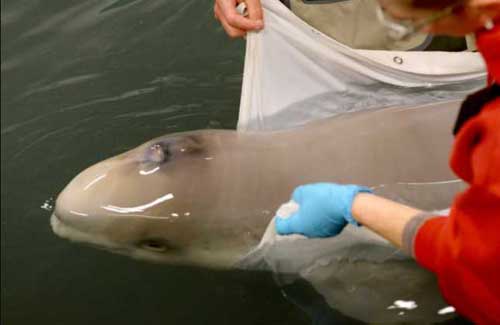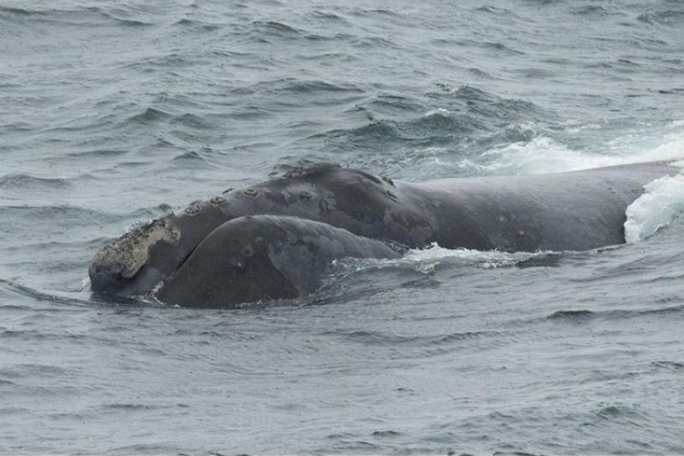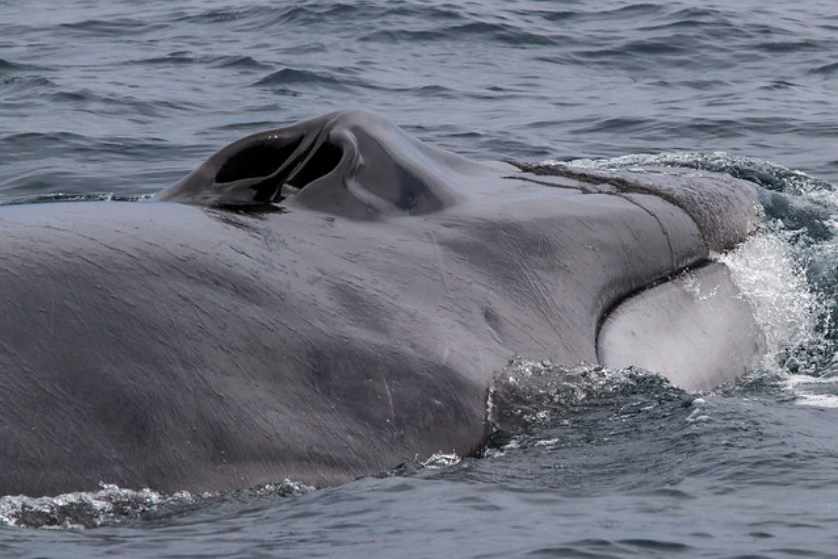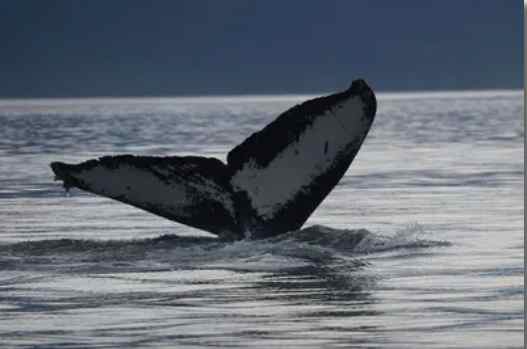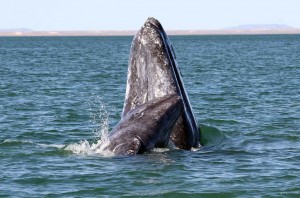
Every year, gray whales migrate from their summer feeding grounds in the Arctic to their wintering grounds off Baja California in Mexico. And roughly every other year, scientists with binoculars count them as they funnel past a point on the California coast a bit south of Monterey Bay. Scientists conduct this survey to keep track of how well the population is doing, and lately they’ve had a new set of eyes to help with the job.
Three eyes, to be exact. Each one is a thermal imaging camera that captures the blow from a whale as it surfaces to breathe.
“A whale is this great big motor that takes in a breath of air and holds it inside for a long time,” said Wayne Perryman, a NOAA Fisheries scientist who helped develop the new system. “When it exhales, the air is much warmer than the background, and we can detect that difference very easily, both day and night.”
New Tech on the Job

The cameras themselves are nothing new—they’re similar to the infrared cameras that police use when searching for suspects from a helicopter. What is new is software that automatically analyzes the video to detect when a whale blows. To do that, the software has to distinguish the blow of a whale from other signals that might confuse it, such as a bird diving into the water or a small boat passing by.
“One challenge was getting the detector to be as accurate as possible without having it get fooled by too many false alarms,” said Dave Weller, the NOAA Fisheries scientist who leads the survey team.
In addition, every time the computer sees a blow, it predicts where and when that same whale will surface to blow again. That prediction algorithm, which is based on years of research into gray whale diving behavior, allows the computer to track individual whales. “If you don’t have a way of tracking individuals, you can double-count some whales or miss them altogether,” Weller said.
Recent Upgrades

Previously, two scientists would conduct the survey—one a spotter with high-powered binoculars and the other a record-keeper. However, human observers can only count whales during daylight, and limited budgets mean that they’re onsite only during the peak weeks of the migration. But the thermal imaging system works 24/7 throughout the entire migration—it was already counting when the earliest migrants made their way south, and it will still be counting when the stragglers take up the rear.
“The new system vastly increases our sample size,” Weller said. “That means we can do a better job estimating the abundance of the population.”
For now, human observers are still working the survey to ensure that the automated system produces comparable results. In the meantime, researchers face the challenge of handling the huge volumes of data the system produces.
Weller expects more than 70 terabytes of data to pile up this season. “We’ve entered the world of Big Data, but we’re still figuring out how to permanently archive such massive volumes of information,” he said.
A Conservation Success Story
Gray whales were hunted nearly to extinction during the whaling days. But this population of gray whales has been making a steady recovery since then, and they were taken off the endangered species list in 1994 (though a second population on the western side of the Pacific remains endangered). “They’re a real success story as far as the management of large whales goes,” said Perryman. “Today the population is up around 20,000, and that appears to be pretty stable.”
Scientists still need to keep track of gray whale populations, however. Despite their recovery, the animals are at risk from ship strikes, entanglement in fishing gear, and other human impacts. Also, as the climate changes, scientists want to know if changes in Arctic ice cover are correlated with changes in population size or timing of the migration.
And so, with a bit of technology, the count goes on.
Source: NOAA Fisheries [xyz-ihs snippet=”Adsense-responsive”]



